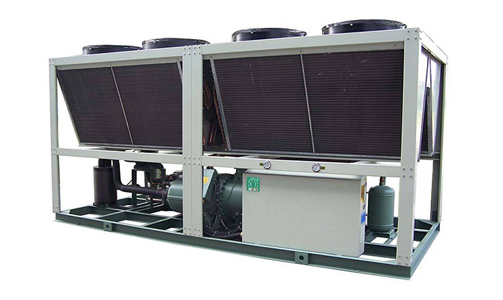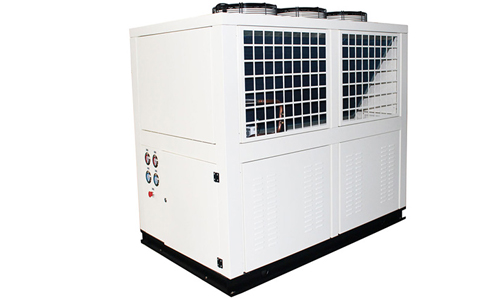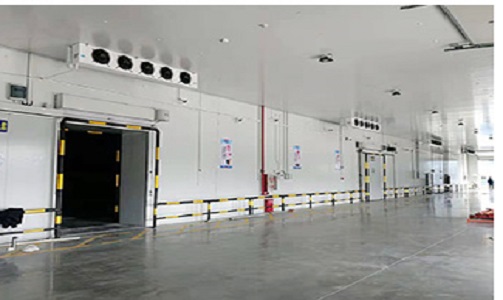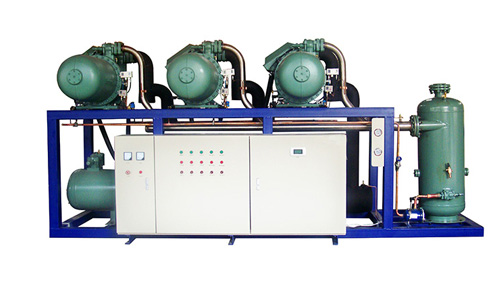Sizing a water chiller involves determining the appropriate cooling capacity required to meet the specific needs of a given application. Water chillers are used in various industries and applications, such as HVAC systems, industrial processes, medical equipment, and more. In this 800-word essay, we will explore the factors to consider and the steps involved in sizing a water chiller.
Determine the Cooling Load: The first step in sizing a water chiller is to determine the cooling load, which is the amount of heat that needs to be removed from the system. The cooling load can vary based on factors such as the size of the space, the type of equipment or process being cooled, and the desired temperature conditions. To calculate the cooling load, you need to consider factors like heat gain from the surroundings, equipment heat load, and any additional heat sources within the system.
Calculate the Heat Load: The heat load is the amount of heat energy that needs to be removed from the system to achieve the desired cooling. It is typically measured in British Thermal Units (BTUs) or kilowatts (kW). To calculate the heat load, you need to consider factors such as the heat transfer rate, temperature differential, and the specific heat capacity of the material being cooled. This calculation may require consulting with experts or utilizing specialized software for accurate results.

Air-cooled Screw Chiller
Select the Chiller Type: Once you have determined the cooling load, the next step is to select the appropriate chiller type for your application. There are different types of water chillers available, including air-cooled chillers and water-cooled chillers. Air-cooled chillers are typically used in smaller applications where water availability is limited, while water-cooled chillers are more suitable for larger-scale applications where a consistent water supply is available.
Consider Efficiency and Energy Consumption: Energy efficiency is an important consideration when sizing a water chiller. Look for chillers that offer high energy efficiency ratings, such as those certified by organizations like the Air Conditioning, Heating, and Refrigeration Institute (AHRI). Energy-efficient chillers can help reduce operating costs and minimize environmental impact.
Determine the Chiller Capacity: The chiller capacity refers to the cooling capacity of the chiller and is typically measured in tons of refrigeration (TR). One ton of refrigeration is equivalent to the heat removal capacity of one ton (12,000 BTU/h) of ice melting over 24 hours. The chiller capacity required for your application depends on the cooling load calculated earlier. It is essential to choose a chiller with sufficient capacity to meet the cooling requirements of the system.

Box Type Air-cooled Chiller
Account for Safety Factors and Future Expansion: When sizing a water chiller, it is advisable to incorporate safety factors and consider any future expansion plans. Adding a safety factor of around 10-20% to the calculated cooling load can account for unexpected variations or changes in the cooling requirements. Additionally, if you anticipate future expansion of your system, it's essential to consider the potential increase in cooling load and select a chiller with extra capacity to accommodate the future needs.
Consult with Experts and Manufacturers: Sizing a water chiller can be a complex process, especially for large-scale or specialized applications. It is recommended to consult with experienced professionals, such as HVAC engineers or chiller manufacturers, who can provide expert guidance and support in selecting the right chiller for your specific requirements. They can consider various factors, assess your application needs, and provide customized recommendations based on their expertise.
In conclusion, sizing a water chiller involves determining the cooling load, calculating the heat load, selecting the appropriate chiller type, considering efficiency and energy consumption, determining the chiller capacity, accounting for safety factors and future expansion, and consulting with experts. Properly sizing a water chiller is crucial to ensure optimal performance, energy efficiency, and longevity of the chiller system. By following these steps and seeking professional advice when needed, you can select the right water chiller that meets your cooling requirements and enhances the efficiency of your application.
Kendall is a professional manufacturer of refrigeration equipment that integrates research and development, design, production and sales together. It is a high-tech enterprise specializing in intelligent energy-saving cold storage planning, design and research; system integration and control; manufacturing, installation and commissioning; project contracting and management; and technical support services.
For more information, please contact us. We will provide professional answers.










